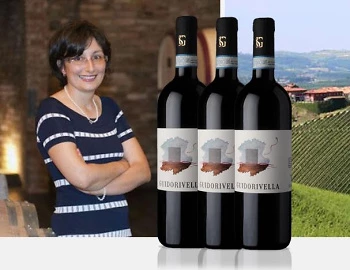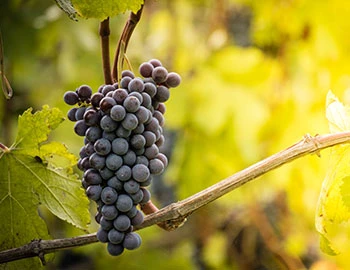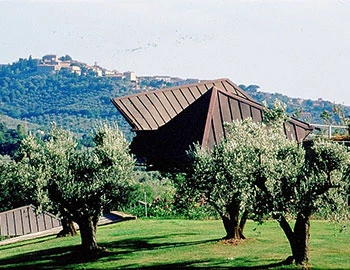Barbaresco Marcorino 2019
Barbaresco Marcorino 2019
DOCG, Silvia Rivella, 750 ml

Description
A great Piedmontese wine created by Angelo Gaja's oenologist of many years, Guido Rivella. The Barbaresco Marcorino impresses in the glass with aromas of red fruits, violets and spicy notes such as liquorice and tobacco. On the palate, it is powerful and well-structured, with balanced acidity and fine tannins. The wine has long ageing potential and is ideal with game, stews and mature cheese.
Attributes
| Grape variety: | Nebbiolo |
| Producer: | Az. Agr. Rivella Silvia |
| Origin: | Italy / Piemont / Barbaresco |
| Ripening potential: | 5 years |
| Drinking temperature: | 16 to 18 °C |
| Food Pairing: | Châteaubriand, Filet Wellington, Brasato di manzo al Barolo, Wild specialities, Pork fillet with plums |
| Vinification: | long must fermentation, fermentation in steel tank |
| Harvest: | hand-picking, strict selection |
| Maturation: | in used barriques, in tonneau |
| Bottling: | no filtration |
| Maturation duration: | 20 months |
| Volume: | 14.0 % |
| Note: | Contains sulphites |
Az. Agr. Rivella Silvia
In 2010, to crown a dream of the experienced oenologist Guido Rivella (Oenologist at Angelo Gaja for decades), who was born in Montestefano / Barbaresco, the Azienda Agricola Silvia Rivella, named after his daughter, was founded.
The province of Piedmont, which in turn includes the Langhe region, is located in north-western Italy. In this area, a UNESCO World Heritage Site, people live in a symbiotic relationship with grapevines and wine. The landscape itself is ideal for viticulture, as it consists of a series of gently rolling hills. Each of these is covered with vines and divided into different plots called "crus" (as in Burgundy). Almost every cru is cultivated individually, so that the character of each vineyard is reflected in its wine. Nebbiolo is the dominant grape variety. Different wines are produced from it, with Barolo and Barbaresco - often called the king and queen of wines - the most famous of these. Both wines have a potential for long-term storage that is almost beyond compare, along with a complexity and tannin structure that is found in few other wines worldwide.
Often overshadowed by its more "masculine" counterpart, Barbaresco is a wine of great elegance and finesse, which genuinely evokes a feminine quality. Barbaresco can only be produced from Nebbiolo, and the grapes may come only from the villages of Barbaresco, Neive, Treiso and Alba. The region also produces Barbera, Dolcetto, Freisa, Arneis and Pelaverga, as well as a small amount of Merlot, Cabernet Sauvignon, Sauvignon Blanc and Chardonnay, all of which are used in the creation of some wonderful wines.

Nebbiolo
Proud Piedmontese
It’s the king of Piedmont: the most sought-after wines come from Nebbiolo. It reaches its highest expression in Barolo and Barbaresco. Its acidic, tannin-rich wines in its youth are often unapproachable. With maturity, however, it develops an ethereal bouquet of cherry, liquorice, violet and rose, as well as truffles, tar and forest floor. Nebbiolo takes its name from the Italian “Nebbia”, meaning fog. This not because of the weather in Piedmont, but due to the whitish film on the ripe, red berries. It was first mentioned by this name in the 13th century. Much like the Pinot noir, Nebbiolo can precisely reflect its terroir, but only if it is really pleased with where it is. It likes cool climates and calcareous soils. Attempts have been made to transplant it, for example, to California, but the results were disappointing. It feels most comfortable in the hills of northern Italy.

Italy
Italy – Where wine is a way of life
The Italian wine regions are extremely diverse, and this is made clear in their wines. Established varieties such as Merlot, Syrah, and Sauvignon can be found on just 15 percent of the total vine growing area. The remaining 85 percent is reserved for autochthonous, indigenous varieties. More than 2,000 different grape varieties are grown under diverse conditions and pressed with various techniques into wines that reach the top tier of the international wine market.



